Crazy about Critters: Wildlife Viewing in Yellowstone
Yellowstone Park Animals
Bison, elk, bears, and wolves are among the stars at the world’s first national park. Yellowstone National Park, along with harboring the world’s highest concentration of geysers, fumaroles, and other geothermal thermal features, offers spectacular wildlife viewing. It is home to more free-roaming wildlife than anywhere else in the Continental U.S. Almost 70 species of mammals and over 300 species of birds call Yellowstone home. Everything from bears and beavers to songbirds and bald eagles can be found in the park’s meadows, valleys, and canyons or flying high in the sky and perched on tree tops. In Lamar Valley, among the most wildlife-rich areas of the park, you might spot bison, elk, black bears, grizzly bears, wolves, and other wildlife. It’s thrilling to see these wild creatures in their native habitat as they hunt, graze, mate, and roam the park.
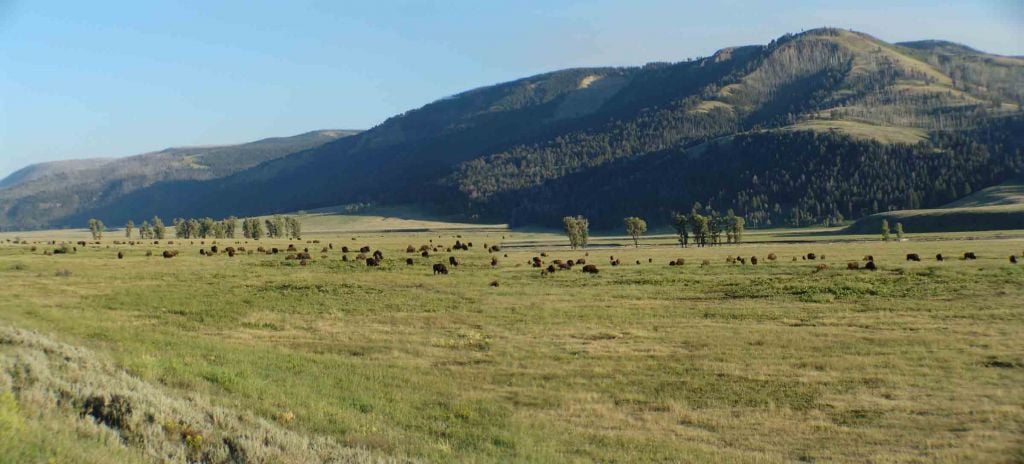
But what you see in Lamar Valley, as well as other areas of the park, depends on the time of day, the season, your equipment, and your expertise. Since animals are most active in the early morning and late afternoon, schedule your prime viewing for those times. To make the most of your wildlife watching, bring binoculars or a high-powered spotting scope. Also, consider going on a guided wildlife watching tour. The experts, after all, know the latest sightings and how to locate even the hard-to-see animals.
Finally, keep a safe distance from all wildlife, which are unpredictable and can be dangerous. Do not approach bears or wolves within 100 yards and all other wildlife, like elk, within 25 yards.
It should come as no surprise that Yellowstone is a dream destination for both professional and amateur photographers alike. With hundreds of wildlife photographs shared on social media daily, we thought we’d put together some of our summer favorites to give you an idea of what you can expect to see and photograph on your next visit to Yellowstone!
Where to spot Yellowstone’s star critters:
Bison
In May 2016, President Obama signed legislation naming the North American bison as America’s first national mammal. The bison is the largest land mammal in North America and one of the most prevalent species of mammal in Yellowstone. Yellowstone’s bison population fluctuates between 2,300 to 5,000 animals. There are two subpopulations of bison in the park, which are defined by where they gather for breeding. The northern herd breeds in the Lamar Valley and the high plateaus that surround the valley. The central herd breeds in Hayden Valley. For most of the year, mature male bison (bulls) live alone or with other bulls—except during the mating season, also called the rut.
The rut begins in late July and goes through August. Bulls display their dominance by bellowing, wallowing, and fighting other bulls. As part of the ritual, big bulls grunt, paw the ground, and sometimes lock horns as they challenge each other for domination and the females. Once a bull has found a female who is close to estrus, he will stay by her side until she is ready to mate, then he moves on to find another female. In winter, you might see icicle-laden bison warming themselves near the Upper Geyser Basin’s hot springs and thermal features. Yellowstone National Park Lodges operate snow coach tours in winter through select areas of the park.
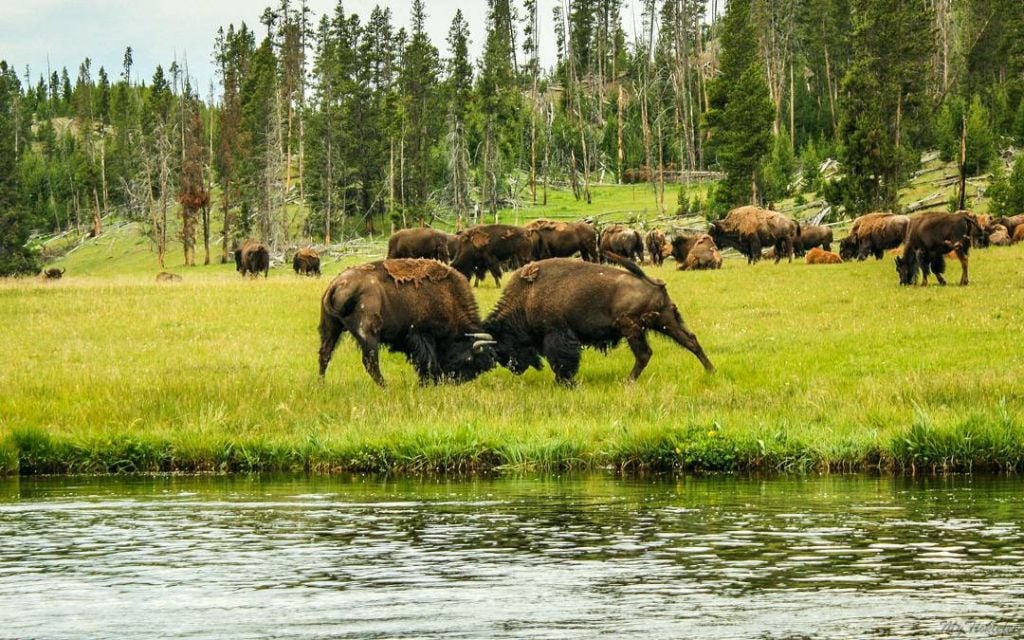
Photo by Instagram user @my_ticklefeet
Elk
During the summer, elk can typically be spotted in the early morning grazing in Yellowstone’s Gibbon Meadows, Elk Park, and Lamar Valley. Although summer is a great time to see elk, the best time is during the rut, which can start any time between mid-August to the beginning of September and lasts about a month. A common area to see the elk is in Yellowstone’s northern range in the Mammoth Hot Springs area and on the west side of the park near the Madison River.
Have you ever heard the bugle of the bull elk during the fall rut? It’s a thrilling yet haunting experience that draws thousands of visitors to Yellowstone each fall. It’s an experience unlike any other in the park, with elk bugling ranging from low throaty sounds or a series of deep grunts to high-pitch whistles. Even before coming upon the herd, you hear the males’ bugling, a sound that starts like a low grunt and escalates into a shrill whistle.
Be aware that male elk can be highly aggressive during this time and charge cars and people. DO NOT approach on foot or in your vehicle. Keep a distance of at least 25 yards or more, especially during the rut or around mothers with new babies.
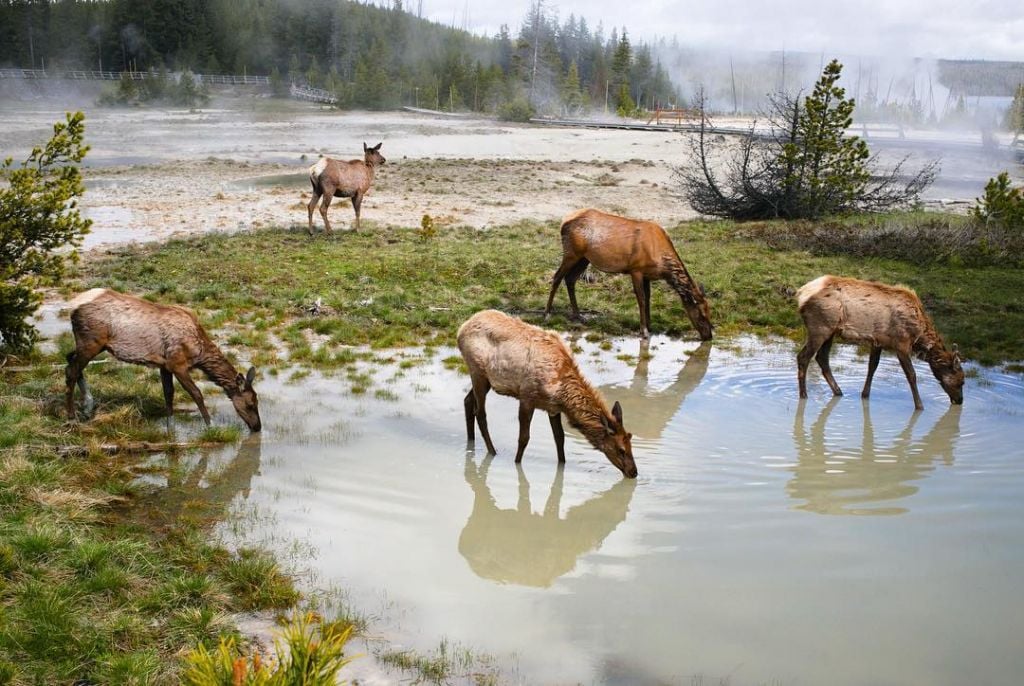
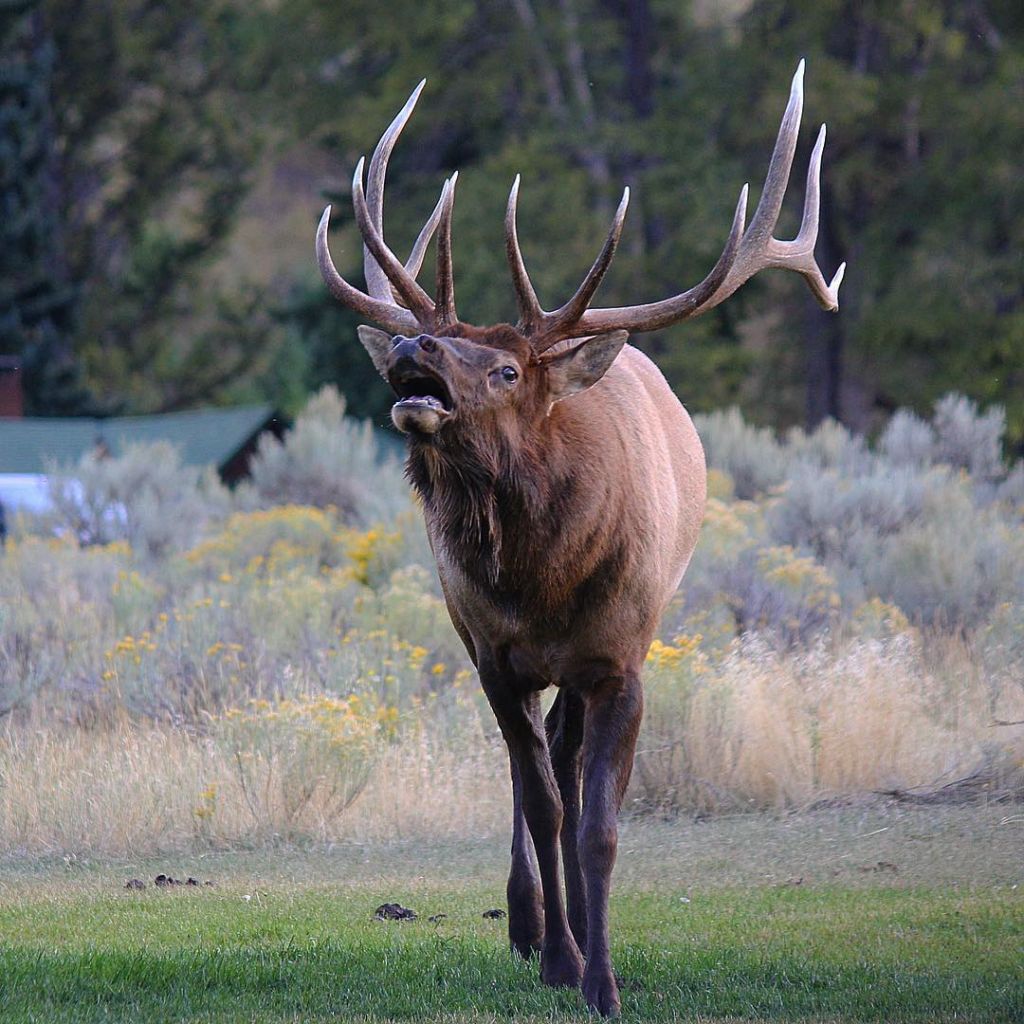
Photos by Instagram users @premaphotographic and @jendegtjarewsky
Bears
Yellowstone is home to two species of bears: grizzly bears and black bears. The grizzly bear is typically larger than the black bear and behaves much more aggressively. In mid-summer, grizzly bears are most commonly seen in the meadows between Tower-Roosevelt and Canyon, and in the Hayden and Lamar valleys.
Although black bears, like grizzlies, are most active at night and in the early morning, they might be spotted during the day and visitors report seeing grizzlies in the high mountain meadows of Mount Washburn and on the east entrance road near Fishing Bridge.
Learn about essential bear safety in Yellowstone here.
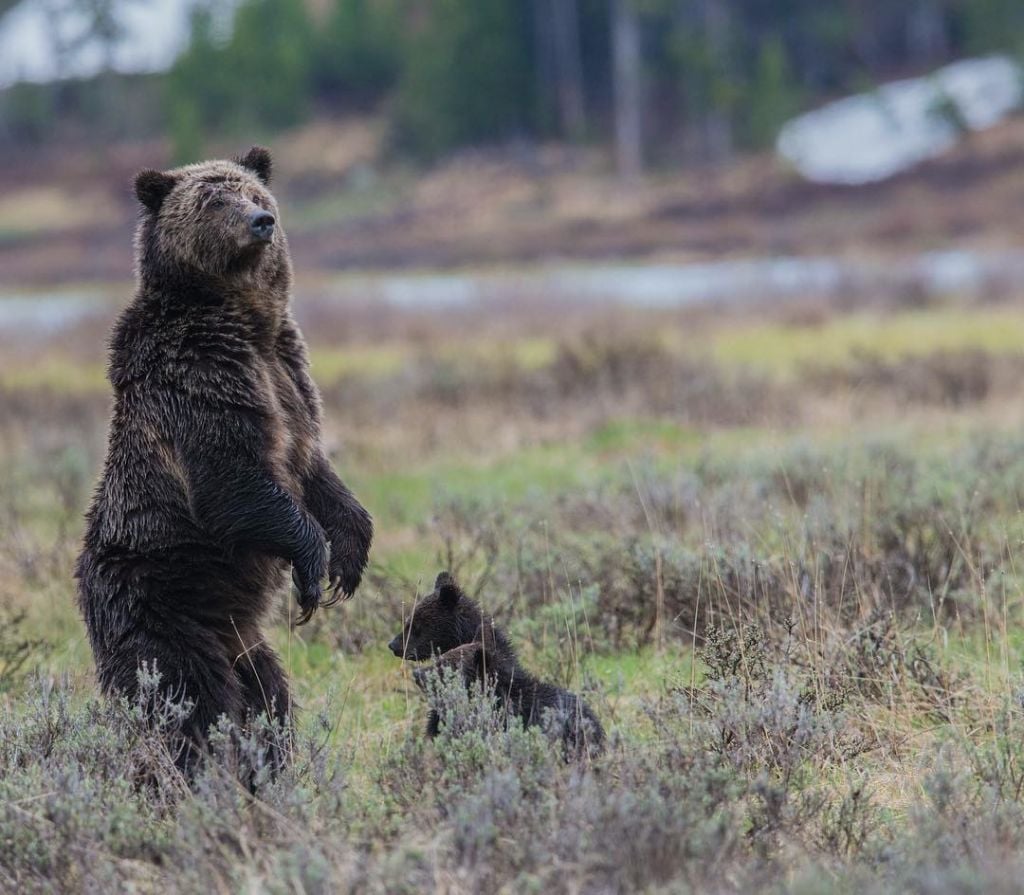
Photo by Instagram user @angelainoregon
Wolves
Although wolves roam the park, Lamar Valley offers the best sightings. In winter, when snow covers the meadows and hillsides, it’s easier to spot the wolves.
In 1995 and 1996, wolves were reintroduced to Yellowstone National Park, beginning with 31 gray wolves from Canada. With the presence of wolves in the park, Yellowstone now has all of the species of mammals known to be present in the park at the time of its creation for the first time since 1923.
With winter being the perfect time to view wolves, consider taking a morning or full-day tour of the Lamar Valley to watch for wildlife. For a more in-depth and educational experience, we offer a Winter Wolf Discover package.
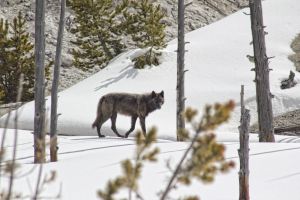
Birds
Osprey, herons, ducks, and other waterfowl can be found in and around Yellowstone Lake and park rivers. From late August through early October, look for hawks in Hayden Valley. It only seems fitting that America’s first national park is home to the country’s national symbol. Bald eagles reside in Yellowstone year-round and are often seen around Yellowstone Lake in the summer months, where they prey on fish and waterfowl.
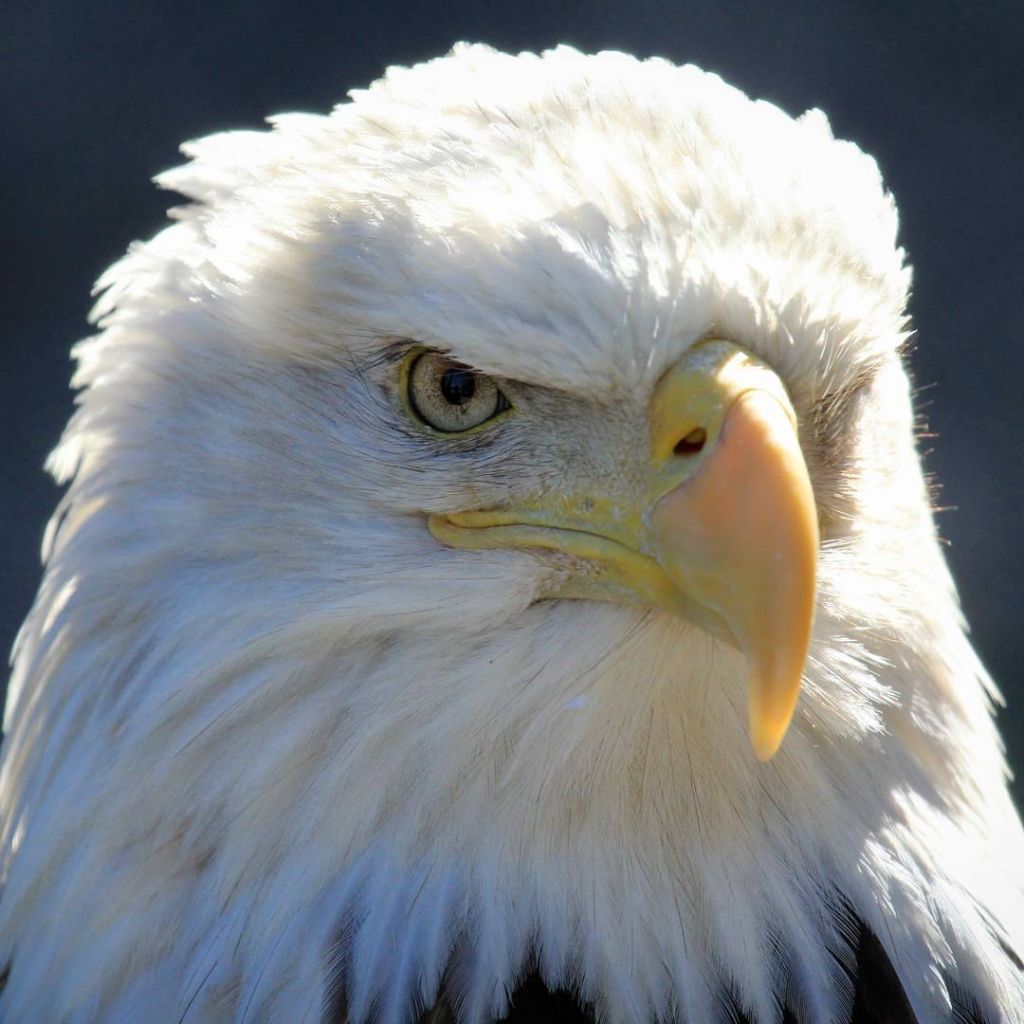
Bald Eagle Photo by Instagram user @jwshogun08
Beaver
While visiting Yellowstone, be sure to look for some of the park’s smaller wildlife, like the beaver. The beaver is a keystone species in Yellowstone and helps to build important habitat structures by damming and diverting streams for other animals in the park.
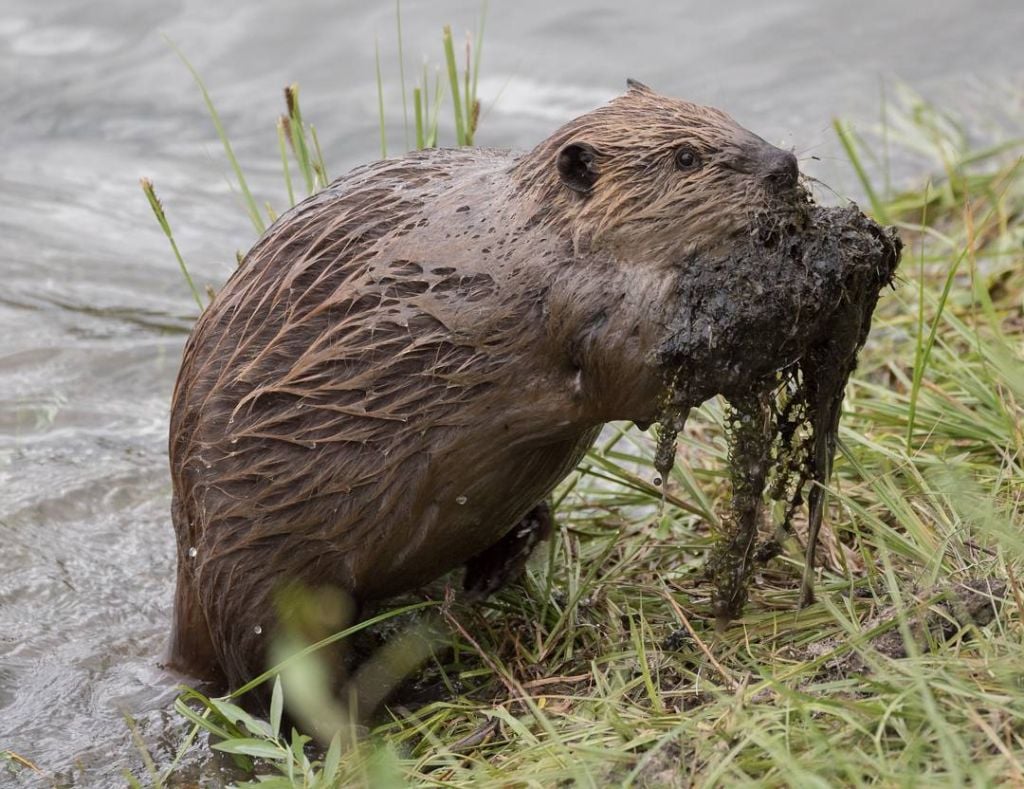
Photo by Instagram user @disney_cobbpr
Coyote
Coyotes are abundant throughout Yellowstone and are a common predator in the Greater Yellowstone ecosystem, often seen traveling through the park’s open meadows and valleys. The average life span of a coyote is 6 years, however for those that inhabit the park, their average life span can be as long as 13 years.
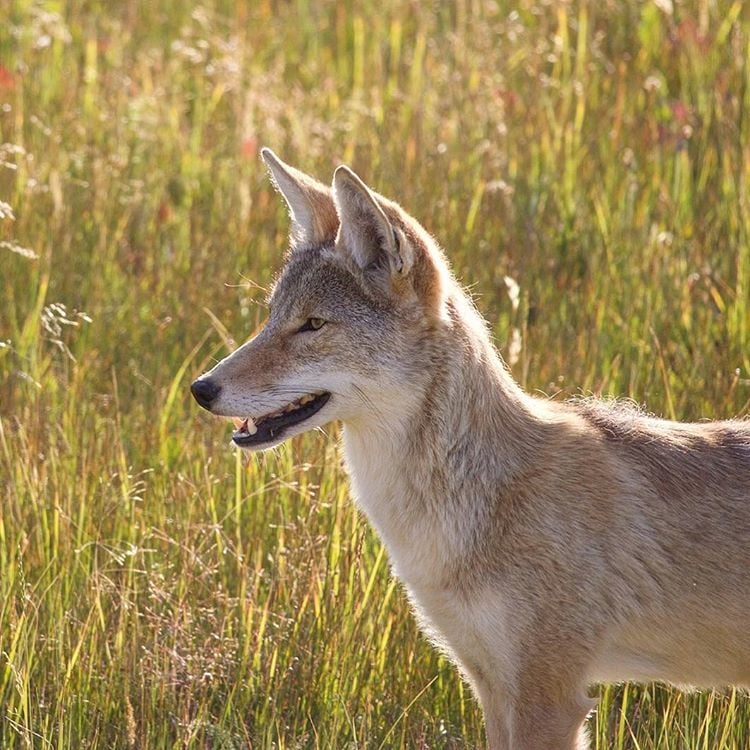
Photo by Instagram user @northeastern_roots
Article contributions from: Candyce H. Stapen. She has written 30 travel guidebooks, including two for National Geographic, and her blogs and articles appear in many outlets.
For A World of Unforgettable Experiences® available from Xanterra Travel Collection® and our sister companies, visit xanterra.com.
Want to experience Yellowstone in-depth? See what makes Yellowstone National Park a great place to work for a season or longer!